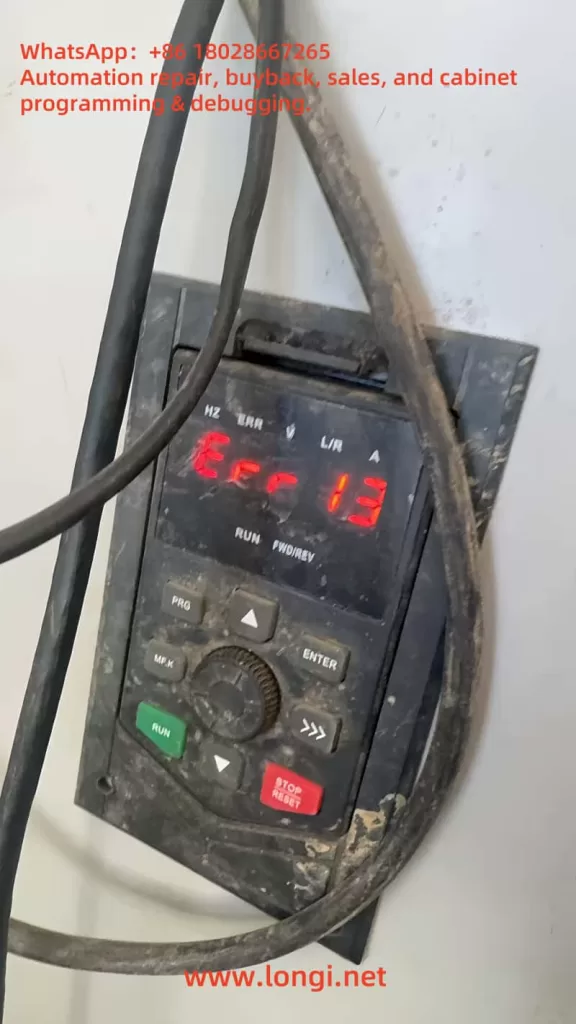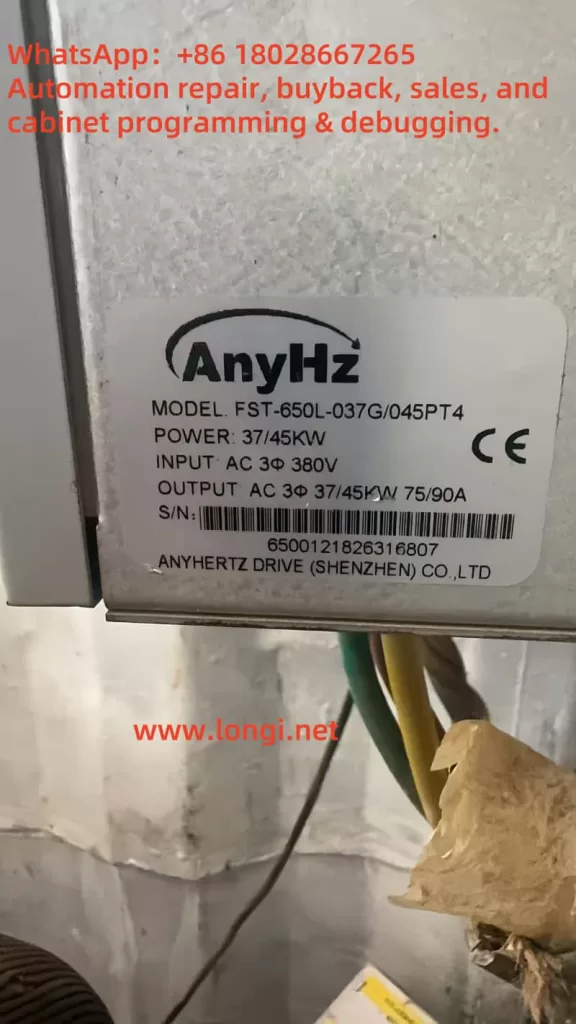1. Introduction
In industrial applications, inverters play a crucial role in motor speed control. Their performance directly affects system efficiency and reliability. The AnyHz (Anyi) FST-650 series inverter is widely used in fans, pumps, and compressors. Among its common faults, “Err13” is frequently encountered, indicating output phase loss. This article provides a comprehensive analysis of Err13, including its causes, diagnosis steps, parameter tuning, and long-term solutions.

2. Meaning of Err13
According to the official user manual and display panel codes:
Fault Code: Err13
Fault Description: Power output phase loss
“Output phase loss” means that the inverter detects one of the output phases (U, V, or W) is missing or the current is significantly abnormal, triggering a protective shutdown.
3. Common Causes of Err13
1. Loose or poor motor terminal connections
Caused by vibrations, poor tightening, corrosion, or wear, leading to poor contact on U/V/W terminals.
2. Damaged output cables
Aging insulation, rodents, mechanical stress, or improper bending could break one phase of the cable.
3. Motor winding failure
One phase of the stator coil is open due to burnout or manufacturing defects.
4. Inverter output module failure
The internal IGBT or current sensing circuit of the FST-650 is damaged, causing abnormal or missing output.
5. Output fuse blown (if used externally)
Some systems use fuses on each output phase. A blown fuse on one phase can cause Err13.
4. On-Site Troubleshooting Steps
Step 1: Confirm if it’s a false alarm
- Use a clamp meter to measure U, V, W phase currents.
- Use a multimeter to check motor winding resistance symmetry.
Step 2: Inspect output cables
- Check all wiring terminals for secure connection and signs of overheating.
- Inspect cable routing for physical damage or moisture ingress.
Step 3: Test motor condition
- Use a megohmmeter to check insulation.
- If possible, replace with another working motor to isolate the issue.
Step 4: Inspect inverter internals
- Check IGBT module, driver board, and current sensors.
- Observe for damaged components or abnormal heating.
5. Relevant Parameter Settings
The FST-650 inverter detects output phase loss via current monitoring and software logic. The following parameters affect phase loss detection:
| Parameter No. | Name | Recommended Setting | Description |
|---|---|---|---|
| F9.10 | Phase loss detection enable | 1 (Enable) | Turns on the function |
| F9.11 | Detection delay time | 0.2–2.0s | Avoids false alarms |
| F2.10 | Torque/current limit | ≥110% | Avoids misjudgment as overcurrent |
| F0.17 / F0.18 | Acceleration / deceleration time | 10–30s | Prevents current overshoot |
6. Repair Actions
1. Re-tighten U/V/W terminal screws
Ensure all output terminals are properly secured.
2. Replace or test output cable
Swap suspected cables with known good ones to isolate faults.
3. Test or replace the motor
If the motor is suspected, test with a known good motor and observe for recurrence.
4. Repair or replace inverter output module
If all external components are normal, the inverter’s power module or current sensor may need replacement.
7. Prevention and Maintenance Tips
- Regular tightening of output terminals, especially in vibrating machinery.
- Quarterly insulation testing of cables and motor windings.
- Install output phase monitoring relay to detect early signs of failure.
- Ensure proper cooling and dust protection for the inverter panel.
- For critical systems, consider motor + encoder + phase monitor redundancy setup.

8. Conclusion
The Err13 “Output Phase Loss” fault on AnyHz FST-650 inverters is a critical protection mechanism that prevents motor damage. While often caused by external wiring or motor faults, internal inverter failures can also trigger this alarm. Systematic diagnosis and parameter adjustments, along with preventive maintenance, will greatly improve system uptime. If issues persist, consult with qualified service professionals or the manufacturer.
